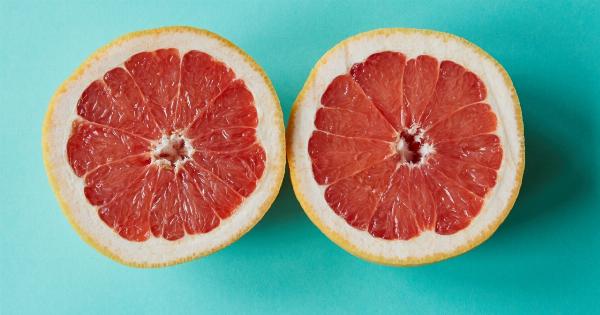Kidney colic crisis is a condition characterized by severe pain in the abdomen or lower back caused by the presence of kidney stones.
If you experience sudden and intense pain in these areas, it is essential to understand the potential signs and symptoms associated with kidney colic and seek immediate medical attention. This article aims to provide an overview of kidney colic crisis, along with the common symptoms, causes, and treatment options, helping you identify and manage the condition effectively.
What is Kidney Colic Crisis?
Kidney colic crisis, also known as renal colic, refers to a sudden and severe pain caused by the presence of kidney stones.
Kidney stones are hard deposits formed from substances such as calcium, oxalate, and uric acid, which can accumulate in the kidneys over time. When these stones become lodged in the urinary tract, they can obstruct the flow of urine, leading to intense pain and discomfort.
Common Symptoms of Kidney Colic Crisis
Identifying the symptoms associated with kidney colic crisis is crucial for prompt diagnosis and treatment. The following are some common signs that may indicate the presence of kidney stones:.
1. Severe Abdominal or Flank Pain
The most noticeable symptom of kidney colic crisis is severe pain that typically affects the abdomen or lower back. The pain can be intermittent, radiate to the groin area, and vary in intensity. It may be accompanied by a constant urge to urinate.
2. Hematuria
Blood in the urine, known as hematuria, is another common symptom of kidney colic crisis. The urine may appear pink, red, or brown, indicating the presence of blood that results from the irritation caused by the kidney stone.
3. Frequent Urination
Patients experiencing kidney colic may also notice an increased frequency of urination. This symptom occurs due to the body’s attempt to flush out the kidney stone by increasing urine production.
4. Nausea and Vomiting
The intense pain associated with kidney colic can trigger nausea and vomiting. This occurs due to the release of certain chemicals in the body that stimulate the vomiting center in the brain.
5. Restlessness
Restlessness often accompanies kidney colic crisis, as the severe pain can make it difficult for individuals to find a comfortable position. Patients may experience anxiety, irritability, and an inability to stay still.
6. Fever and Chills
In some cases, kidney colic may be associated with a low-grade fever and chills. These symptoms suggest the presence of an infection in the urinary tract, which may occur alongside kidney stones.
7. Painful Urination
Passing urine may become painful during a kidney colic crisis. The obstruction caused by the kidney stone can lead to a stinging or burning sensation while urinating.
8. Cloudy or Foul-Smelling Urine
The presence of kidney stones can cause changes in urine appearance and odor. Cloudy urine with a strong and unpleasant smell may indicate an underlying kidney colic crisis.
9. Difficulty Finding a Comfortable Position
The intense pain from kidney colic can make it challenging for patients to find a comfortable position. Restlessness and constant shifting may be observed in individuals experiencing a colic crisis.
10. Back or Abdominal Tenderness
Physical examination may reveal tenderness in the back or abdomen when a patient is experiencing kidney colic crisis. The area around the affected kidney may be sensitive to touch and palpation.
Causes of Kidney Colic Crisis
Understanding the potential causes of kidney colic crisis can help in preventing future occurrences. The following are common causes of kidney stones and subsequent renal colic episodes:.
1. Dehydration
Inadequate fluid intake can lead to concentrated urine, increasing the risk of kidney stone formation. Dehydration not only reduces urine volume but also affects the balance of minerals and substances that can lead to stone development.
2. Diet
Consuming a diet high in salt, animal proteins, and oxalate-rich foods can contribute to the formation of kidney stones. Increased dietary oxalate intake, found in spinach, rhubarb, and beetroot, can increase the risk of stone formation.
3. Family History
Having a family history of kidney stones increases the likelihood of developing kidney colic crisis. Genetic factors can influence the predisposition to stone formation and the risk of passing down certain stone-forming conditions.
4. Urinary Tract Infections
Recurrent urinary tract infections can increase the risk of developing kidney stones. These infections can cause changes in the urinary environment, promoting stone formation.
5. Certain Medical Conditions
Medical conditions such as hyperparathyroidism, gout, and certain gastrointestinal disorders can increase the risk of forming kidney stones. These conditions affect the levels of substances in the body involved in stone formation.
Diagnosis of Kidney Colic Crisis
If you suspect you are experiencing a kidney colic crisis, it is crucial to seek medical attention for an accurate diagnosis. A healthcare professional will likely perform the following diagnostic tests:.
1. Medical History and Physical Examination
Your doctor will start by taking a detailed medical history, including any symptoms you may be experiencing. They will then perform a physical examination to assess the area of pain or tenderness.
2. Imaging Tests
Imaging tests, such as ultrasounds, X-rays, or CT scans, are commonly used to visualize the presence of kidney stones.
These diagnostic tools provide detailed images of the urinary tract, allowing healthcare providers to identify the location, size, and number of stones present.
3. Urine Tests
Urinalysis allows healthcare professionals to analyze a urine sample for the presence of blood, crystals, or signs of infection. These findings can help confirm the diagnosis and guide appropriate treatment.
Treatment Options for Kidney Colic Crisis
Once diagnosed with kidney colic crisis, several treatment options are available to manage the condition effectively. The choice of treatment depends on the size, type, and location of the kidney stones, as well as the severity of symptoms.
Common treatment options include:.
1. Pain Medication
To alleviate the intense pain associated with kidney colic, healthcare providers may prescribe pain medications, such as nonsteroidal anti-inflammatory drugs (NSAIDs) or opioids.
These medications can help relieve pain and discomfort while waiting for the stone to pass or undergoing other interventions.
2. Hydration and Fluid Therapy
Increasing fluid intake is crucial in managing kidney colic crisis. Adequate hydration can help flush out small kidney stones and prevent the formation of new ones.
In severe cases of dehydration or inability to tolerate oral fluids, intravenous fluid therapy may be required.
3. Medical Expulsion Therapy
For smaller kidney stones, certain medications can be prescribed to aid their passage through the urinary tract. These medications, such as alpha-blockers or calcium channel blockers, relax the muscles in the ureter, facilitating stone expulsion.
4. Extracorporeal Shock Wave Lithotripsy (ESWL)
ESWL is a non-invasive procedure that uses shock waves to break down kidney stones into smaller fragments. These smaller pieces can then pass more easily through the urinary tract. ESWL helps avoid the need for surgery in many cases.
5. Ureteroscopy
Ureteroscopy involves the use of a thin tube called a ureteroscope to visualize and remove or break up stones in the ureter or kidney. This minimally invasive procedure is often used for larger or more stubborn stones that cannot pass naturally.
6. Percutaneous Nephrolithotomy (PCNL)
PCNL is a surgical procedure used for large or complex kidney stones. It involves creating a small incision in the back to access the kidney and remove the stones. PCNL is typically recommended when other treatments are ineffective or not suitable.
Prevention of Kidney Colic Crisis
Preventing future kidney colic crisis episodes involves adopting certain lifestyle modifications and dietary changes. Here are some preventive measures to reduce the risk of kidney stone formation:.
1. Stay Hydrated
Drinking an adequate amount of water, especially during hot weather or physical activity, is essential to maintain good urinary flow and prevent the concentration of minerals that contribute to stone formation.
Aim to drink at least 2-3 liters of fluids per day, unless advised otherwise by your healthcare provider.
2. Dietary Modifications
Adjusting your dietary choices can help prevent the recurrence of kidney stones. Reduce your consumption of high-oxalate foods like spinach, rhubarb, and beetroot, and limit your salt and protein intake.
Incorporate a balanced diet rich in fruits, vegetables, and whole grains.
3. Limit Caffeine and Alcohol
Excessive consumption of caffeine and alcohol can contribute to dehydration and increase the risk of stone formation. Limit your intake of these substances to promote better kidney health.
4. Maintain a Healthy Weight
Obesity and weight gain can increase the risk of kidney stones. Ensure you maintain a healthy weight through regular exercise and a well-balanced diet.
5. Regular Urine Testing
Monitoring urine composition through regular tests can help detect any underlying abnormalities or changes that may lead to stone formation. Consult your healthcare provider for appropriate testing intervals and recommended frequency.
Conclusion
If you suspect you are experiencing a kidney colic crisis, it is crucial to understand the potential symptoms and seek immediate medical attention.
The severe pain, along with other common symptoms like hematuria, frequent urination, and nausea, may indicate the presence of kidney stones. Timely diagnosis and appropriate treatment can help alleviate the pain, prevent complications, and reduce the risk of recurrence.
By adopting preventive measures such as staying hydrated, making dietary modifications, and maintaining a healthy weight, you can take steps towards minimizing the chances of kidney stone formation and subsequent colic crisis episodes.






























